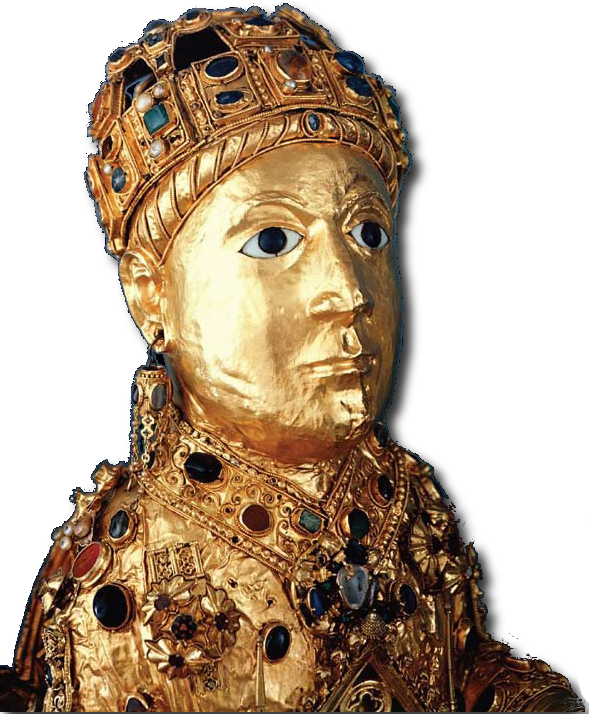 |
MedievalEuropeOnline
the web home of Medieval Europe: A
Short History
|
How to Read the Textbook.
Before you read any book, play with it. Look at the cover, front and back; read the preface; skim through the Table of Contents; read through the index (what's covered? what's not covered?); flip through the body of the book, looking at how it is formatted. Get to know the book as a whole personality. It takes only a few minutes, and you'll notice important things you might otherwise miss. For example, Medieval Europe has a glossary at the back. This is good to know!
I even smell a new book. Try it. Yes, yes, books have distinctive smells.
Okay, now, here's the nitty gritty about how to proceed to you read a textbook in its assigned bits and pieces.
1. EXPECT TO WORK. A History textbook is just like Chemistry textbook: it contains arcane information that you have to master. To do this you must do more than read the text--you must work with the text.
2. ONE CHAPTER AT A TIME. A chapter is a reasonable unit to master in one sitting, and most of your reading assignments will include a single chapter, sometimes two. Good. If you fall behind, catch up one chapter at a time. You cannot absorb four chapters in one night's work. No one can, and most people would fall asleep trying. Remember, textbook-reading is work, and four chapters at once is simply too much work for the human brain.
3. READ LIKE AN ATHLETE. Don’t sprawl on a comfortable chair and doze over a chapter. No! Read with energy; read with an itch; read with intensity. For some of you, this might mean reading while standing up or walking or even while reading out loud. For others, it might mean timing yourself to see how fast you can do the deed. For others still, it might mean rewarding yourself with a break every 15 minutes to do some pushups, to eat some chocolate, or to chat with friends. Do whatever works to keep your brain whirring at 100 percent. Passive reading is deadly reading.
4. BEGIN WITH THE "BONES" OF THE CHAPTER. Each chapter has an introduction and conclusion: read these first. Then, flip through the chapter looking first at the MAIN HEADINGS (in all caps) and then at the sub-headings (in bold). These will tell you about the chapter's path. In chapter 2, for example, you'd learn from the introduction that the period 500-700 is unjustly seen as a "dull time"; and you'd learn from the conclusion that this era created an enduring divide between cultural power (controlled by the Church) and political power (controlled by military elites). By flipping through chapter 2's headings, you'd then see four main subjects: society; politics (with lots of sub-headings for various areas); the church (also lots of sub-headings); and intellectual life. All this takes about 3 minutes, and it prepares you to read chapter 2 smartly.
5. FOLLOW THE STORY. History is a story, a tale about people and lands and beliefs. The "facts" of history are not just random tidbits to memorize obediently. They fit together into a story. Look for the story and then stick the facts to it.
6. THROW AWAY YOUR HIGHLIGHTER AND LOVE YOUR PEN. Dozens of studies have proven that highlighting is a distraction and note-taking engages you as an "active learner." Scrawl in the margins. Draw lines to connect a map and its mention in the text. Circle or star main points. Make a list of main figures and events. Note-taking is simple and it is well-established good practice. Why? If you write something down, you are more likely to remember it.
7. PAY ATTENTION TO THE PICTURES, MAPS, AND OTHER STUFF. Isn't it great to turn a page and find a full-page map that means less reading? Sure, sure, it's great. But the map is not there to make you happy. It's there to help you understand what you are reading. Look at it. Read the caption. Think on how it relates to the paragraphs you've just read. Do the same with pictures, charts, and the boxed biographies and myths. It takes discipline to do this, but you get big rewards. If you read the text only, you'll remember only 60-70 percent of what you should.
8. DON'T SWEAT THE SMALL STUFF. As a rule, each paragraph has a single point: look for it, and let the rest of the paragraph reinforce it for you. Look for example, at the paragraph that begins on the bottom of page 32: its main point is that polygyny was common, and everything else elaborates on that theme. First, capture the main point of the paragraph; then, enjoy the elaboration; and boom, you'll have mastered the pargraph. Yes, it really is that easy.
9. DO SWEAT THE BIG STUFF. Yes, of course, look for the main point of each paragraph. But also be sure that you grasp the main point of each sub-heading and each MAIN HEADING. These headings are signals that "this subject matters," and it is your job to know why. Do the same with the words in the glossary; these are noted in bold font, and they are fair game for quizzes. Also, since the maps and pictures and boxed materials re-emphasize stuff covered in the main text, they are also fair game. In chapter 2, I would not expect you to remember Dagobert I (who gets one lousy mention on page 39), but I would expect you to know about Clovis, who gets three paragraphs plus a picture on pages 37-8.
10. TEST YOURSELF. You'll find here test questions for each chapter. If you can answer them easily, congratulations! You have mastered the chapter. Close your textbook and pat yourself on the back for a job well done.
If you still have problems mastering a chapter, talk with your instructor. Her or she will have still more good advice.